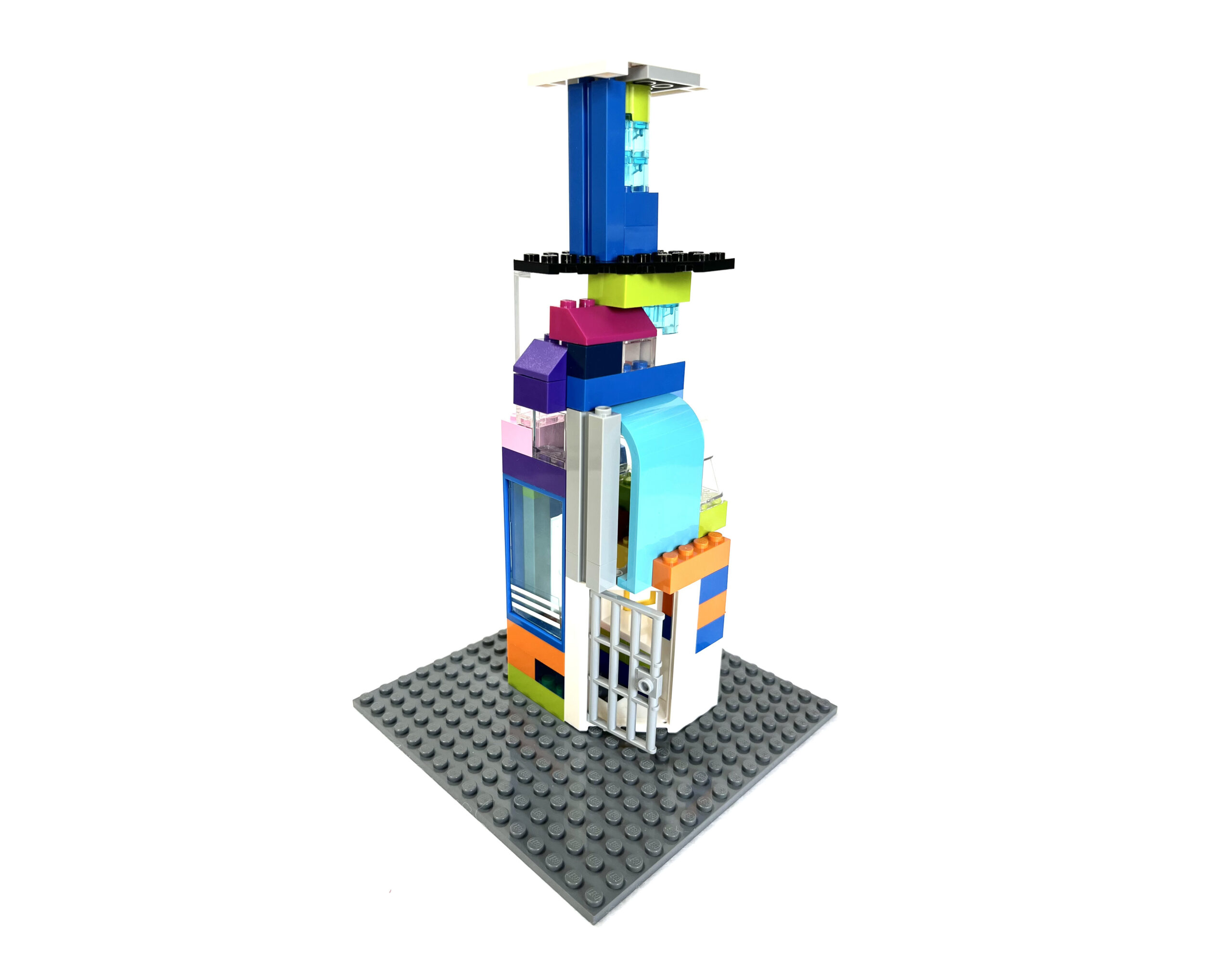Collaboration – Build a model without using words
We build a model together based on some simple building rules. The challenge is that we cannot use words while we are building. The purpose of the activity is for us to practice communicating together without words.

Procedure
Framework
Suggestion for introduction
We create a motivating environment for the children.
For instance, we can say: “We practice building together and we try to use what we have already learned to reflect on the activity together. Maybe we learn something new about each other, like how to collaborate on a task without using words. The activity is about us building together (e.g.) a skyscraper with doors, windows, and other things that we think should be on a skyscraper. There are some simple building rules we follow while building:
- We take turns on placing a brick.
- We can only use bricks from our own pile.
- All the bricks must be used.
- We cannot use words while building. But we can point, laugh, use sounds, make noises, nod etc.”
Time
The activity can be adapted to the framework of one lesson and varied according to the time available and the children’s prerequisites.
Materials
We can use small Lego sets that we are familiar with, or wooden blocks, plus-plus, magnetic tiles, paper, or something else. We each get about 40 bricks. The most important thing is that the materials make us want to build.
During the activity
During the play session, the children encounter challenges and successes, where we can stop and help spot what is difficult or what is going well. We can do this in several ways:
Reflection routines
When we get the opportunity to reflect together with the children on what challenges or discoveries arise along the way, we can use one or more reflection routines. It could be, for example, a learning metaphor with a social strategy that we practice, an emoji that describes the feeling we have right now, or a rating of how well we think the building is going. In this way, a reflection routine can help to show and put into words the experiences that the children have during the play session.
Facilitating questions
We can ask facilitating questions to the children along the way, as they naturally arise in the building process. In this way, we facilitate the play session so that we continue the play and at the same time learn something from it. For example:
- I see that you have stopped building. I wonder how we can continue from here?
- I see that you have encountered a challenge. Should we try to solve it together?
- Try to notice what you are doing right now. Do you think this is a collaborative strategy?
Show and Tell
Finally, in the play session, we give a Show and Tell of our construction, so that we have the opportunity to share our experiences, reflections, and feelings about the construction process.
First, we talk about our model and the process of building it. During the Show and Tell, we can use reflection routines and reflective questions to support the discoveries that have been made. For example:
- What went well?
- What was difficult?
- Is there anything that you want to do differently the next time we build a model?